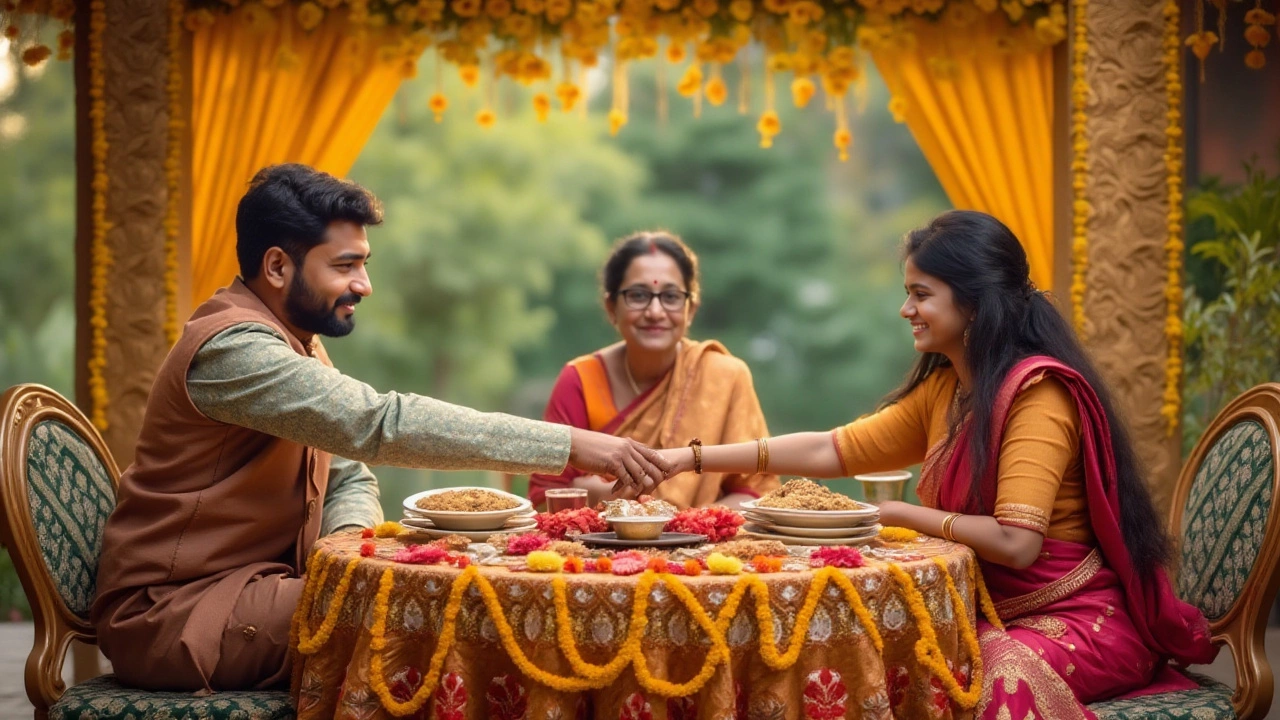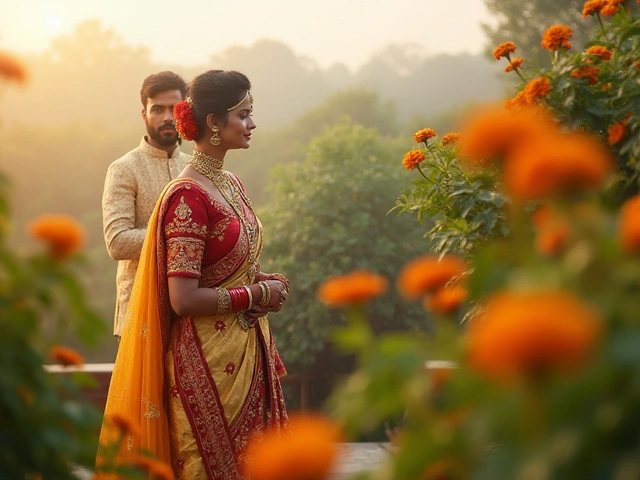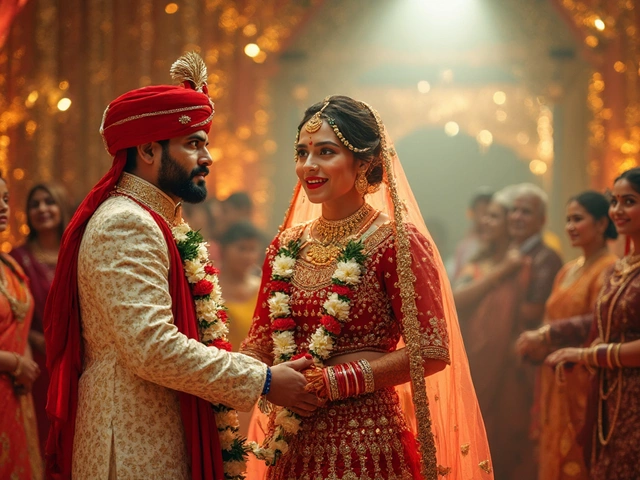Planning a wedding can be a whirlwind of excitement and choices, with each detail painting a part of the dream day picture. Among these details lies the crucial decision of who shoulders the cost of the wedding photographer. Traditionally, wedding expenses have been divided in specific ways, but contemporary couples often find themselves questioning these conventions.
The art of capturing unforgettable moments is more pivotal than ever, as photos offer a timeless portal to relive cherished memories. But as wedding roles evolve, so does the approach to handling costs associated with creating these visual treasures. Navigating this can be both a task of tradition and personal preference, leaving many couples curious about the best path forward.
This article delves into the norms and nuances of financing the wedding photographer, providing insights into the shifting dynamics of this particular expense. From traditional guidelines to modern approaches, and sprinkled with cultural considerations, it offers an insightful journey into making informed financial choices that suit your wedding vision.
- Traditional Responsibilities
- Modern Shifts in Paying
- Budget-Friendly Tips
- Cultural Differences
- Tips for Communication
Traditional Responsibilities
In the grand tapestry of wedding planning, the role of who pays for which element has been clearly defined by tradition over the years. When it comes to the wedding photographer, it has historically been the bride's family who has taken on the responsibility of covering this cost. This stems from a long-standing belief that the bride's family is responsible for hosting and financing the wedding celebration, a tradition deeply rooted in many cultures worldwide.
However, these customs are not set in stone. With societal shifts and evolving family structures, many couples today question and sometimes deviate from these traditions. This deviation could stem from both practical reasons—such as each family’s financial standing—and personal choices, like the couple wanting to share the load of their wedding expenses. Nevertheless, in numerous instances, the convention remains a guiding principle, serving as a starting point for discussions about expenses.
The rationale behind these roles is both historical and symbolic. In eras gone by, weddings were viewed as pivotal social events, and a lavish celebration organized by the bride's family showcased their status and generosity. The photographer, capturing moments of joy and celebration, was part of this broader showcase. Now, with the changing face of weddings, modern couples often view these traditions as flexible and open to interpretation, adapting them to suit their unique circumstances.
Breaking Down Traditional Costs
Typically, the bride's family has shouldered a larger portion of the wedding budget, covering not just the wedding photographer but also the venue, catering, and décor. The groom's family, on the other hand, might contribute towards the rehearsal dinner and certain ceremonial expenses. Despite these broad distinctions, regional and cultural variations can lead to different interpretations of these roles. For instance, in certain Hindu traditions, both families may share the costs equally as a gesture of unity and mutual respect.
Many people still find it helpful to refer to traditional models when navigating modern weddings. According to 'The Wedding Planner’s Guide', a staple text in many wedding planning circuits, more than 45% of today's couples still choose to follow these established guidelines to some extent. The reason this tradition persists is not only because of its deep roots but also its role in clarifying and distributing the vast array of wedding expenses involved. Yet, as societies change, so too do the expectations and norms surrounding such practices.
"The traditions surrounding wedding expenses are not merely rules but frameworks that can be adapted to fit each couple's unique situation," advises noted wedding planner, Emily Post.
Recognizing the diverse landscape of wedding planning today, many planners and couples advocate for a flexible approach. They consider what is most important for the couple and their families, both financially and symbolically. By balancing traditional expectations with personal preferences, modern weddings can honor the past while celebrating the couple's future.
Modern Shifts in Paying
In today's dynamic world, traditions around wedding expenses are experiencing subtle yet impactful shifts. It’s no longer uncommon to see couples taking the reins entirely when it comes to the expenses involved with hiring a wedding photographer. This change is partly tied to the growing trend of couples marrying later in life, which often means they are more financially independent and prefer to manage costs themselves. Along with the shift in financial authority, there's an emerging preference for personalizing weddings to reflect the couple's own values and taste, free from the constraints of age-old traditions.
But what has truly fueled these changes are the evolving societal norms around shared responsibilities and gender roles. With both partners contributing financially in equal measure to the household, the expectations are tilting towards shared wedding expenses as well. Many couples find that by managing the budget themselves, they ensure that each aspect, right from the venue down to the pre-wedding photoshoot, aligns with their vision without the pressure from external familial expectations.
According to the Wedding Report, over 50% of modern-day weddings in Western countries are primarily funded by the couple themselves, a statistic that paints a clear picture of this evolving trend. India, while steeped in its own traditions, is witnessing a similar change amongst urban couples who prioritize autonomy over adherence to customs. By making these financial decisions together, couples not only alleviate familial burdens but also exercise ownership over their special day in a manner that reflects mutual respect and partnership.
Financial Communication and Transparency
A critical ingredient in navigating these financial waters is communication. Couples who openly discuss their financial expectations find that they are better prepared to handle any bumps that may arise along the way. Clear boundaries and honest conversations about who covers what can preempt disagreements or misunderstandings, not just with each other but with families too. There’s a new wave of understanding wherein it's okay to go against the grain if it ensures harmony and happiness other than merely sticking to division lines laid down across generations.
"I firmly believe that a wedding is a celebration that reflects the essence of the couple, which includes the manner in which it is funded. Whether you align with tradition or choose a modern approach, what counts is mutual satisfaction," says an acclaimed wedding planner, Anita Dongre, encapsulating the movement well.
Aiding couples further are robust wedding planning apps and tools that assist with budgeting, ensuring they keep track of where each penny is spent. From spreadsheets to digital checklists, technology acts as an invaluable ally in ensuring no financial detail slips through the cracks, allowing couples to focus on the personal elements of their day without stress.
Ultimately, who pays the wedding photographer isn't dictated by tradition or modernity alone. It's a decision that takes shape based on the couple’s personal circumstances, their outlook on marriage, and their familial and cultural influences. As society becomes more inclusive and open-minded, the anecdote holds true: a successful wedding is one where its planning reflects love and intention as much as the ceremony itself does.
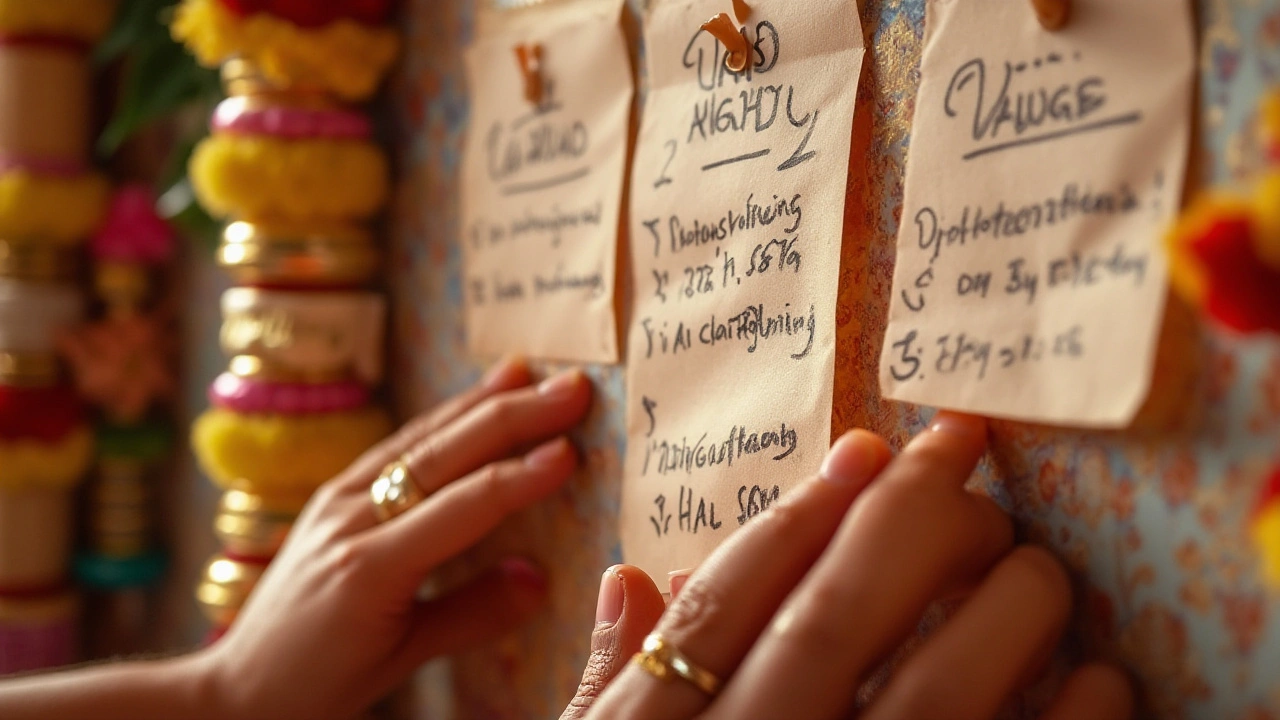
Budget-Friendly Tips
Weddings can be as expensive as they are beautiful, and one of the biggest parts of the budget often goes towards photography. Every couple wants to capture those once-in-a-lifetime moments, but keeping costs in check is just as important. Here are a few practical and creative ways to balance that desire for beautiful images with the reality of a budget.
Start by assessing your priorities. Sit down with your partner and list out the aspects of your wedding that hold the most importance. If capturing memories is high on the list, consider allocating more budget here while reducing costs in other areas. For an affordable option, it's possible to find a talented newcomer to the photography scene; they often provide stellar work at a fraction of established rates. Look through their portfolio to ensure their style aligns with your vision, and you might just find a gem. Another great tip is to hire photographers for specific parts of the day instead of the entire event. Focus on those key moments, such as the ceremony and first dance, to get a detailed depiction that you’ll treasure.
Don't overlook the power of negotiation. When consulting with photographers, discuss what you need and see if they can offer a tailored package. Some may allow you to forego extras that aren't essential to you, helping you reduce costs. Additionally, consider planning your wedding during an off-peak season or on a weekday. Those times often come with reduced fees that make high-quality photography more accessible. Investing time in researching could greatly benefit your wedding budget.
According to The Knot, “The average cost of a wedding photographer is around $2,400, but prices vary widely.” Considering variations in costs is crucial for staying within your financial plan.
You can also ask friends and family for recommendations. Personal testimonials can be incredibly helpful, and make sure to ask if their photographer offers referral discounts. Exploring all these options can gradually help steer your wedding photography towards a more budget-friendly solution without compromising on what’s important. With some careful planning and open conversation, it's possible to have the best of both worlds—beautiful pictures that don't break the bank.
| Strategy | Potential Savings |
|---|---|
| Hiring Newcomers | 20-30% |
| Off-Peak Booking | 15-20% |
| Partial Day Coverage | 10-15% |
| Negotiated Packages | Varies |
Cultural Differences
When it comes to who traditionally pays for the wedding photographer, cultural perspectives often paint a fascinating mosaic of practices and beliefs. Around the world, wedding traditions vary widely, influencing who is responsible for this particular piece of the wedding budget. In Western cultures, historically the bride’s family has been expected to cover the costs of the wedding, including photography. This notion roots back to the idea of dowries and the bride's family presenting the wedding as a significant event worthy of meticulous documentation. As societies advance, these customs evolve, often blending traditional norms with modern realities.
In contrast, many Asian cultures approach wedding expenses differently, often with more shared responsibility. For instance, in India, the division of costs like photography can vary significantly between families and regions. Some communities may expect the groom's family to contribute equally or sometimes entirely cover specific expenses, reflecting deeply ingrained traditions of hospitality and celebration. As weddings continue to grow in spectacle and scale, both families are also coming together more frequently, fostering a sense of unity and partnership in financing the wedding’s precious moments.
Moreover, the global shift towards more intimate and personal weddings has seen the couple themselves often choosing to take charge of financing the photographer. This shift may stem from a desire for autonomy, allowing couples to inject a personal style and vision into how their pre-wedding photoshoot and big day moments are captured. A 2023 survey by The Knot indicated that 27% of couples now prefer to fund their wedding photography independently, showcasing a move towards personalized and tailored wedding experiences.
In Middle Eastern cultures, weddings are grand affairs where multiple parties, including extended families, may come together to share costs. Photography in such traditions is not merely an individual choice but a representation of familial pride and societal standing, often resulting in shared expenses that ensure no corners are cut in visual storytelling. This collective approach has seen many families hire multiple photographers or even videographers to ensure every moment is immortalized.
"Photography is a universal language, bridging cultures with the beauty of visual memories, yet how it is celebrated and financially managed is as diverse as the world itself," says Jasmine Star, a renowned wedding photographer. Her words echo the sentiment that while capturing memories is a shared joy across cultures, who pays for these memories can be a varied tale.
Understanding these cultural nuances can offer couples new perspectives as they plan their special day. Whether influenced by tradition, modern shifts, or a blend of both, exploring these differences enriches the path to deciding who ultimately pays for the wedding photographer. Knowledge of these diverse practices can also guide couples as they discuss their own priorities, helping them weave the perfect tapestry of memories captured on arguably one of the most important days of their lives.
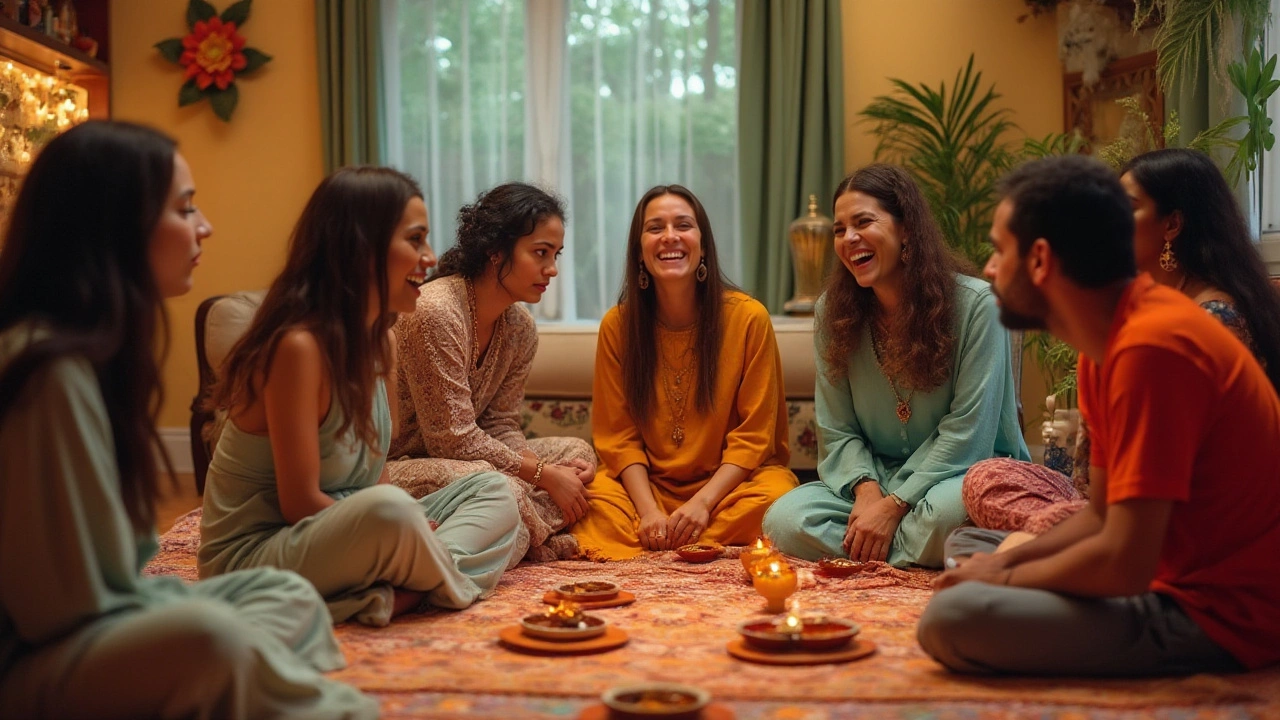
Tips for Communication
When planning a wedding, clear and open communication is crucial not just for smooth execution, but also for maintaining harmonious relationships among everyone involved. Deciding who pays for the wedding photographer is just one puzzle piece in a larger picture and open discussions can simplify decision-making. Start the conversation early and approach it with a sense of collaboration. Early discussions allow all parties to weigh in on expectations and preferences. Set a meeting where all involved parties – typically the couple, and occasionally, parents or other contributors – can sit together and discuss the budget and financial responsibilities.
Communicate not only what your expectations are but also ask for others to share theirs. Listen actively, respecting different perspectives and personal circumstances. A respectful and calm tone can prevent potential conflicts and make room for compromise where necessary. Remember, these discussions are ultimately about crafting a memorable event for all, a sentiment echoed by many experts in the field. As renowned wedding planner Mindy Weiss once said,
"A wedding is not just about two people, it involves families coming together, so clear communication builds the foundation for a beautiful celebration."
Strategies for Financial Discussions
The financial aspect of wedding planning can be sensitive; hence, sensitivity should be a guiding principle in these discussions. One effective strategy is to begin by establishing a comfortable environment for everyone involved. Understanding each other's limits and capabilities can lead to more informed decisions. Create a detailed list of all wedding expenses, not just the photographer, and allocate responsibilities based on what each party feels they can manage. This can be organized through a shared document which everyone has access to, providing transparency and an easy way to make adjustments as needed.In some cases, cultural backgrounds or traditions might dictate specific arrangements when it comes to paying. Acknowledge these traditions and, if possible, weave them into the discussion. For instance, in some Indian weddings, photography costs might traditionally fall to the bride's family. However, with changing norms, these can be discussed and adjusted with mutual consent. Adding this layer of empathetic understanding will support a cooperative atmosphere.
Establish decision-making protocols to prevent misunderstandings down the road. Designate someone to track expenses and communicate updates to all concerned parties, ensuring that everyone remains on the same page. With pre-agreed terms, there's less likelihood of unchecked spending causing issues. Consider potential conflicts proactively and decide together how disputes should be resolved to keep the focus on joyful anticipation rather than financial stress.
Effective Use of External Resources
Sometimes, an outside perspective can help mediate these discussions. Engaging with a professional wedding planner or advisor isn't just about logistics but also about leveraging their experience in handling awkward conversations. They can propose solutions or even split costs innovatively, ensuring no one shoulder’s too heavy a load. If a professional is out of reach, look to online forums or communities for advice. Couples share their journey with candid honesty on platforms like Reddit or specialized wedding planning websites, offering diverse viewpoints and unique ideas for managing costs.In summary, keeping communication lines open, leveraging strategic planning tools, and involving those you trust can yield a more stress-free wedding preparation experience. The key is to approach all discussions with an openness to adapt and understand, as you collectively write the first pages of a beautiful new chapter in your lives together. Remember, in the grand tapestry of your wedding day, the choice of who pays for the wedding photographer is significant, but so is the grace in which you handle these decisions.
